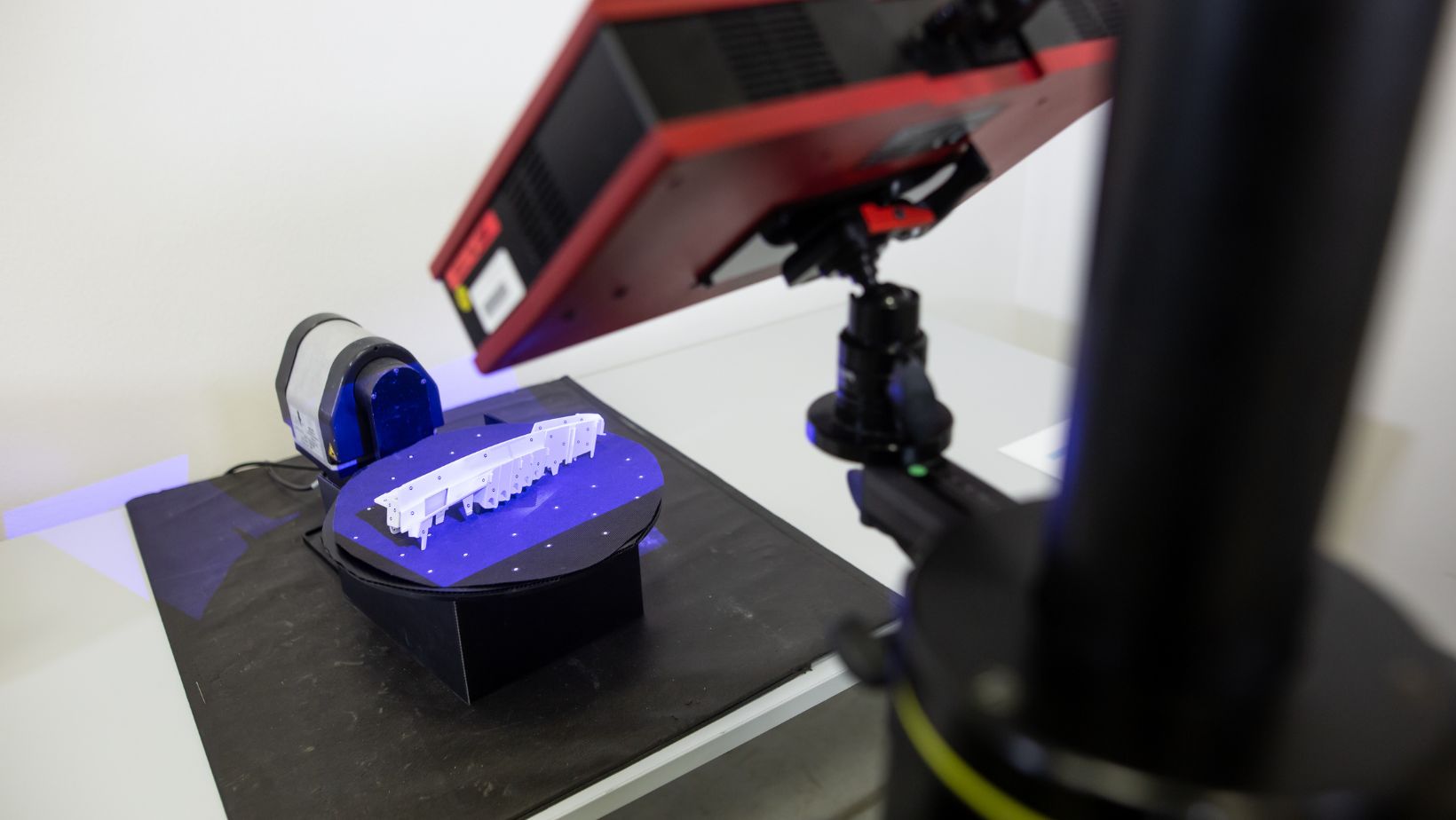With the advancements in technology, 3D scanning has emerged as a revolutionary tool that is transforming various industries, including design, construction, gaming, and more. This cutting-edge technology offers a range of benefits, from enhancing accuracy and efficiency to streamlining processes and facilitating collaboration. In this article, we will delve into the world of 3D scanning, exploring how it works, its applications, benefits, and its impact on different sectors.
Table of Contents
ToggleWhat is 3D scanning, and how does it work?
3D scanning technology involves capturing the shape of physical objects or environments using a 3D scanner. These scanners use various methods, such as laser technology, to create digital representations of real-world objects. The process starts with the scanner projecting a light onto the object and capturing the reflection to create a point cloud, which is then used to generate a detailed 3D model.
3D scanning is changing the game by providing a non-invasive and efficient way to capture accurate measurements of objects and spaces. It allows for the creation of detailed digital models that can be used for a variety of applications.
When you use a 3D scanner, the device captures data points from the surface of an object, building a point cloud that represents the object’s geometry. This data is then processed to create a 3D model that can be manipulated and analyzed for various purposes.
Designers and architects use 3D scanning to create accurate as-built models of existing structures, aiding in renovation and restoration projects. In construction, the technology is used for project planning, quality control, and creating digital twins of buildings.
What are the benefits of using 3D scanning?
One of the primary advantages of 3D scanning is the time-saving aspect it offers. By quickly capturing detailed data of objects or environments, professionals can streamline their workflows and reduce project timelines significantly. Additionally, high-res 3D scanning services enhance accuracy and precision, allowing for the creation of highly detailed models that can be used for design, analysis, and visualization.
Scanning technology eliminates the need for manual measurements and drawings, saving a considerable amount of time in the data collection and modeling processes. This efficiency translates to faster project delivery and increased productivity.
3D models generated from scan data are incredibly accurate, capturing even the smallest details of an object or environment. This level of precision is beneficial in various industries, from manufacturing and prototyping to architecture and heritage preservation.

For construction teams, 3D scanning is a game-changer as it allows for the quick and accurate documentation of site conditions, enabling better decision-making and reducing the likelihood of errors and rework. This leads to cost savings and improved project outcomes.
How is 3D scanning revolutionizing the gaming industry?
The gaming industry has embraced 3D scanning technology to create realistic digital models and immersive gaming experiences. By implementing 3D laser scanning techniques, game developers can capture real-world objects and environments and integrate them into their virtual worlds, blurring the line between reality and fiction.
Game developers use 3D laser scanners to capture objects, textures, and environments with high precision, allowing for the creation of visually stunning games with lifelike graphics and detailed textures that enhance the player’s immersive experience.
Point clouds generated from 3D scans serve as the foundation for creating realistic 3D models in games. These models can accurately represent real-world scenes and objects, adding authenticity and depth to the gaming environment.
By incorporating 3D scanning technology into their workflow, game designers can expedite the creation of game assets, such as characters, props, and landscapes. This not only saves time but also allows for the development of more detailed and immersive gaming worlds.
Why do professionals prefer using 3D scanners?
Professionals across various industries prefer using 3D scanners due to the numerous advantages they offer over traditional methods. From enhancing the efficiency of workflows to simplifying complex tasks, 3D scanning technology has become an indispensable tool for professionals seeking precision and accuracy in their work.
Integrating 3D scanning data with CAD software enables professionals to create detailed digital models for design, analysis, and visualization purposes. This seamless integration streamlines the design process and facilitates better decision-making throughout a project’s lifecycle.
Compared to traditional methods of data collection and modeling, 3D scanners offer a faster and more cost-effective solution. Professionals can capture vast amounts of data in a short time, reducing the overall project timeline and improving productivity.
In surveying and mapping applications, 3D scanners provide accurate and detailed data that can be used for creating topographic maps, monitoring construction progress, and conducting site surveys. This level of precision ensures reliable and up-to-date information for decision-making.
How can 3D scanning technology benefit the design and construction industry?
For the design and construction industry, 3D scanning technology offers a range of benefits that improve project outcomes, reduce errors, and enhance collaboration among stakeholders. By leveraging scanning technology, professionals can ensure smoother project execution and achieve greater efficiency in their workflows.

3D scanning enables architects and project managers to accurately measure existing conditions, plan effectively, and model design concepts in a digital environment. This detailed information facilitates better decision-making and coordination throughout the project lifecycle.
By using 3D scanning to capture precise as-built data, construction teams can identify potential clashes, errors, and discrepancies early in the project timeline. This proactive approach minimizes the need for costly rework and alterations, leading to time and cost savings.
3D scanning promotes better communication and collaboration among architects, engineers, contractors, and clients by providing a common platform for visualizing project data and design intent. This shared understanding fosters synergy and alignment among all parties involved, ensuring project success.






